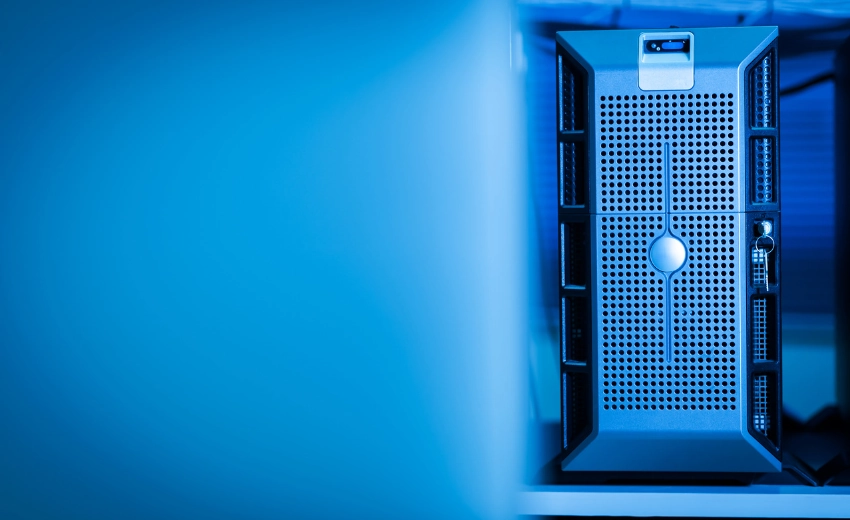Rapid technological advancements have unlocked new possibilities in the IT sector, with computer vision and data science emerging as two of the most transformative fields. These technologies hold immense power individually, but when combined, their potential becomes even more significant. Computer vision and data science services are reshaping industries, driving innovation, and solving complex challenges in unprecedented ways. This article explores the transformative impact of integrating computer vision with data science in IT, highlighting key applications, benefits, and prospects.
Understanding Computer Vision and Data Science
Computer Vision is a subset of artificial intelligence (AI) that enables machines to interpret and analyze visual information from the world. By mimicking human sight, computer vision can process images, videos, and other visual inputs to perform tasks such as object detection, facial recognition, and image segmentation.
On the other hand, data science involves extracting insights and knowledge from structured and unstructured data using techniques like machine learning, statistical modeling, and predictive analytics. It empowers organizations to make informed decisions by analyzing vast amounts of data.
Computer vision and data science enhance each other’s capabilities, creating a synergy that drives more intelligent solutions and innovative applications.
Key Applications in the IT Sector
- Automated Quality Control in Manufacturing
- How it Works: Computer vision systems inspect products on assembly lines, identifying defects and ensuring adherence to quality standards. Data science analyzes the results, identifying patterns and trends to optimize processes.
- Impact: Improved product quality, reduced waste, and increased efficiency.
- Enhanced Security Systems
- How it Works: Computer vision monitors real-time surveillance footage to detect suspicious activities or unauthorized access. Data science algorithms analyze historical data to predict security vulnerabilities.
- Impact: Enhanced safety and proactive threat prevention.
- Healthcare Innovations
- How it Works: Computer vision processes medical images (e.g., X-rays, MRIs) for accurate diagnoses. Data science integrates these results with patient records, predicting disease progression and treatment outcomes.
- Impact: Faster, more accurate diagnoses and personalized healthcare solutions.
- Retail Analytics and Customer Insights
- How it Works: Computer vision analyzes in-store customer behavior, such as product preferences and movement patterns. Data science combines this information with sales data to optimize inventory and marketing strategies.
- Impact: Improved customer experiences and higher revenue.
- Smart Cities and Traffic Management
- How it Works: Computer vision monitors traffic flow and detects congestion points, while data science predicts future traffic patterns based on historical data.
- Impact: Reduced traffic congestion and enhanced urban planning.
- Agricultural Innovations
- How it Works: Computer vision analyzes drone-captured images of crops to detect pest infestations, disease, or nutrient deficiencies. Data science predicts crop yields and recommends corrective actions.
- Impact: Increased agricultural productivity and sustainable farming practices.
Benefits of Combining Computer Vision and Data Science
- Improved Decision-Making
Organizations gain deeper insights into trends, anomalies, and opportunities by processing and analyzing visual data alongside other datasets. This leads to better decision-making and strategic planning.
- Automation and Efficiency
Integrating computer vision with data science enables automation of repetitive and time-consuming tasks. For example, automated document processing uses optical character recognition (OCR) to extract data from documents, which is then analyzed for actionable insights.
- Cost Savings
Automating processes and optimizing workflows through these technologies reduces operational costs. For instance, predictive maintenance powered by computer vision and data science minimizes downtime and repair expenses.
- Enhanced User Experiences
Applications like augmented reality (AR), virtual reality (VR), and personalized recommendations leverage computer vision and data science to deliver immersive and tailored experiences.
- Scalability
Cloud-based data science platforms combined with edge computing for computer vision allow scalable solutions to handle increasing data volumes and users.
Real-World Use Cases
- E-commerce
Platforms like Amazon use computer vision for visual search—allowing customers to find products by uploading images—and data science to recommend similar items based on user preferences and behavior.
- Autonomous Vehicles
Self-driving cars rely heavily on computer vision for object detection, lane tracking, and obstacle avoidance. Data science integrates this information with real-time traffic data to navigate safely and efficiently.
- Social Media Platforms
Platforms like Instagram and Facebook use computer vision for content moderation and facial recognition, while data science analyzes user behavior to deliver personalized content.
- Banking and Finance
Financial institutions use computer vision to verify customer identities through document scanning, facial recognition, and data science to detect fraudulent transactions.
Challenges in Implementation
Despite its immense potential, integrating computer vision and data science in the IT sector comes with challenges:
- Data Quality and Volume
High-quality, labeled datasets are essential for training computer vision models. Managing and processing large datasets can be resource-intensive.
- Computational Complexity
Combining these technologies requires significant computing power, which can be costly for small to medium-sized enterprises.
- Ethical Concerns
Issues like data privacy, algorithmic bias, and ethical use of AI-driven solutions must be addressed to ensure responsible implementation.
- Skill Gaps
Developing and deploying such solutions requires computer vision and data science expertise, which may be scarce in specific regions or industries.
The Future of Computer Vision and Data Science in IT
Integrating computer vision and data science will become more seamless and widespread as technology evolves. Emerging trends include:
- Edge AI
Deploying computer vision models on edge devices for real-time processing will reduce latency and enhance applications like autonomous drones and IoT devices.
- Explainable AI (XAI)
Ensuring transparency and interpretability in AI models will build trust and enable users to understand how decisions are made.
- Integration with Blockchain
Combining blockchain with these technologies will enhance data security, ensuring tamper-proof storage and visual data sharing.
- AI-as-a-Service (AIaaS)
Cloud providers will offer pre-trained models and scalable platforms for integrating computer vision and data science into applications without extensive expertise.
Conclusion
The combination of computer vision and data science unlocks new possibilities in the IT sector, driving innovation across industries and redefining how businesses operate. By leveraging the strengths of these technologies, organizations can solve complex problems, improve efficiency, and deliver exceptional value to their customers. While challenges exist, the potential benefits far outweigh the obstacles, making this integration a cornerstone of technological progress. As the IT landscape evolves, the synergy between computer vision and data science will continue to shape the future, creating more innovative, more connected solutions for a rapidly changing world.


